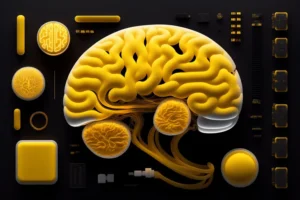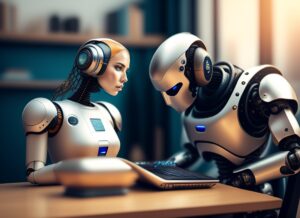Outline machine learning
I. Introduction
A. Definition of Machine Learning B. Significance of Understanding Machine Learning
II. Applications of Machine Learning
A. Main Uses and Applications B. Real-world Examples of Machine Learning
III. AI vs. ML: Unraveling the Differences
A. Defining Artificial Intelligence (AI) B. Differentiating Between AI and Machine Learning (ML)
IV. The Trio of Machine Learning
A. Supervised Learning B. Unsupervised Learning C. Reinforcement Learning
V. Demystifying Machine Learning: Working Mechanism
A. Basic Principles of How Machine Learning Works B. The Role of Algorithms in Machine Learning
VI. Embarking on the Learning Journey
A. How to Start Learning Machine Learning B. Resources and Courses for Beginners
VII. The Origin of the Term “Machine Learning”
A. Historical Context and Evolution B. Significance of the Term in the Modern Context
VIII. Exploring Machine Learning Through Examples
A. Real-world Applications and Success Stories B. Understanding the Impact of Machine Learning

Decoding Machine Learning: A Journey into Its Origins, Applications, and Learning Paths
Machine learning, a buzzword in the tech realm, has become integral to our digital lives. But what does it truly mean? How does it work, and why is it distinct from artificial intelligence? In this article, we embark on a journey to decode the world of machine learning, exploring its meaning, applications, and learning avenues.
I. Introduction
Definition of Machine Learning
Machine learning is a subset of artificial intelligence that empowers systems to learn and improve from experience without being explicitly programmed. It involves algorithms that enable computers to recognize patterns, make decisions, and improve over time based on data inputs.
Significance of Understanding Machine Learning
Understanding machine learning is pivotal in a world dominated by technology. It fuels innovations, drives automation, and impacts various industries. Delving into its intricacies unlocks a new dimension of possibilities for both tech enthusiasts and professionals.
II. Applications of Machine Learning
Main Uses and Applications
Machine learning finds applications across diverse domains. From predictive analytics in finance to recommendation systems in e-commerce, we’ll explore the main uses and applications that make machine learning an indispensable tool.
Real-world Examples of Machine Learning
Concrete examples bring concepts to life. We’ll delve into real-world instances, showcasing how machine learning powers everyday technologies, from virtual assistants to personalized content recommendations.
III. AI vs. ML: Unraveling the Differences
Defining Artificial Intelligence (AI)
Before diving into machine learning, it’s crucial to differentiate between AI and ML. We’ll define artificial intelligence and set the stage for understanding the specific role of machine learning within this broader concept.

Differentiating Between AI and Machine Learning (ML)
While AI encompasses a range of capabilities, machine learning is a specific methodology within this realm. We’ll unravel the distinctions, ensuring clarity on how these terms differ and intersect.
IV. The Trio of Machine Learning
Supervised Learning
Supervised learning involves training a model on a labeled dataset, where the algorithm learns from input-output pairs. We’ll explore how this foundational type of machine learning operates and its practical applications.
Unsupervised Learning
In unsupervised learning, the algorithm works without labeled data, discovering patterns and relationships autonomously. We’ll delve into the unsupervised realm, highlighting its unique challenges and benefits.
Reinforcement Learning
Reinforcement learning mimics the human learning process by rewarding desired behaviors. We’ll explore this dynamic approach and its applications, ranging from gaming to autonomous systems.
V. Demystifying Machine Learning: Working Mechanism
Basic Principles of How Machine Learning Works
To understand machine learning, we need to grasp its working principles. We’ll demystify the core concepts, explaining how algorithms process data, make predictions, and refine their performance over time.
The Role of Algorithms in Machine Learning
Algorithms serve as the engine of machine learning. We’ll dissect their role, exploring the diversity of algorithms and their impact on the effectiveness of machine learning models.
VI. Embarking on the Learning Journey
How to Start Learning Machine Learning
For those eager to dive into the world of machine learning, we’ll provide actionable steps, outlining how to initiate the learning journey and set a solid foundation.
Resources and Courses for Beginners
Navigating the wealth of learning resources can be overwhelming. We’ll curate a list of beginner-friendly resources and courses, ensuring a smooth entry into the vast landscape of machine learning.
VII. The Origin of the Term “Machine Learning”
Historical Context and Evolution
The term “machine learning” has a rich history. We’ll explore its evolution, tracing its origins from early concepts to its current prominence in the tech lexicon.
Significance of the Term in the Modern Context
Understanding the historical context adds depth to our appreciation of the term. We’ll discuss why “machine learning” has become a cornerstone in contemporary discussions on technology and artificial intelligence.
VIII. Exploring Machine Learning Through Examples
Real-world Applications and Success Stories
Concrete examples highlight the practical impact of machine learning. We’ll showcase real-world applications and success stories, illustrating how machine learning transforms industries and enhances user experiences.
Understanding the Impact of Machine Learning
Beyond individual applications, we’ll reflect on the broader impact of machine learning on society, economy, and innovation. Appreciating this impact fosters a holistic understanding of the technology’s significance.
Conclusion
In conclusion, machine learning is not just a technological concept but a transformative force shaping the digital landscape. We’ve scratched the surface, exploring its definition, applications, and learning paths. As you embark on your machine learning journey, remember: it’s a dynamic realm with boundless possibilities.
Custom Message: Get Access Now: https://bit.ly/J_Umma
FAQs
- What distinguishes machine learning from artificial intelligence?
- Machine learning is a subset of artificial intelligence, focusing on algorithms that enable systems to learn and improve from experience.
- Can you provide examples of machine learning applications in everyday life?
- Certainly! The article includes real-world examples, from virtual assistants to personalized content recommendations.
- What are the three main types of machine learning?
- The trio includes supervised learning, unsupervised learning, and reinforcement learning, each with its unique characteristics.
- How does machine learning work in simple terms?
- The article breaks down the basic principles, explaining how algorithms process data and refine their performance over time.
- Where can beginners find resources to start learning machine learning?
- The article offers practical steps and curated resources to help beginners initiate their machine learning journey.

